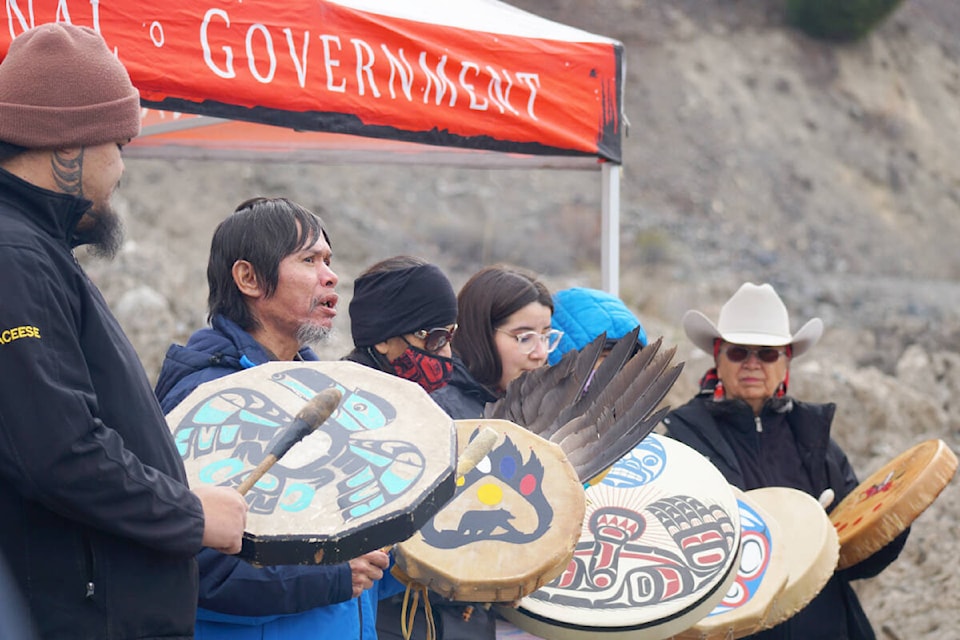An archaeological investigation in the Bull Canyon area, 120 km west of Williams Lake, is being led by the Tŝilhqot’in National Government (TNG).
Before contact with settlers, the area was the scene of many battles between First Nations, said Tl’etinqox Chief and TNG tribal chair Joe Alphonse,
“It was a key area to get through. All the trails heading from the east to the west all travelled through there. It was the Tŝilhqot’in peoples’ favourite battle place.”
The nation had protocols for anyone coming through. Other First Nations travelling through would have to get permission.
“If they had intentions of war they wouldn’t ask for permission so our warriors would wait and lure them to that location and engage in battle with them.”
Battles took place with the Carrier, Northern Carrier, Kwakiutl, Cree and Blackfeet who he said would travel through quite frequently to gain access to obsidian rock at Anahim Peak, 39 km northwest of Anahim Lake.
Alphonse said in Southern Alberta at Head Smashed in Buffalo Jump Park there is a map showing the trade route used to trade with the Tŝilhqot’in.
“Today when you talk with Tŝilhqot’in people they often refer to Mustang horses as Cayuses because they would trade obsidian for horses.”
Alphonse said warriors often took their own lives at Bull Canyon because they thought it was better to do that then have the enemy kill them and take their spirit.
Describing that part of history as “grim,” Alphonse said there are probably a lot of human remains amidst the gravel in that location.
As a result, a year ago the TNG contacted the Ministry of Transportation and Infrastructure (MoTI) who agreed to shut down the Bull Canyon gravel pit on Highway 20 and are no longer using it.
“We know damage has been done to some of the known archaeological sites. Bull Canyon, being so close to the Chilcotin River, is a high archaeological area,” Alphonse said, noting there are quiggly holes there, evidence of former pit-houses. “It’s important to take the appropriate steps to improve relations. The good will now is to make sure that it does not happen again.”
A spokesperson for the MoTI said the ministry has been working with the TNG regarding the closure of the gravel pit area.
The ministry and its maintenance contractor stopped using the gravel pit in early 2020, when archaeological considerations with the site were brought forward by the TNG.
“The ministry is working in partnership with the Tŝilhqot’in National Government on archaeological and cultural studies on the area of the gravel pit. These studies are considered undertaken whenever a First Nation raises concerns about potential archaeological sites,” the spokesperson noted.
Ridgeline Archaeology Ltd. of Prince George is working with TNG employees on the project, which began last year and is proceeding this year.
There are many locations of interest throughout the Bull Canyon area and the TNG are co-operating with the MoTI so no further damage occurs.
Every archaeological location is important, Alphonse said.
“Our history was not written, it was an oral one. Every location verifies those stories. That’s like our library system. Having that recognized and dealing with that in this way is the best way.”
On Tuesday, April 19, a smudging ceremony was held at Bull Canyon to acknowledge the history of the area and allow work on the project to resume.
READ MORE: Tŝilhqot’in chiefs lean on government to better protect Indigenous heritage sites
news@wltribune.com
Like us on Facebook and follow us on Twitter
